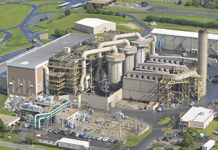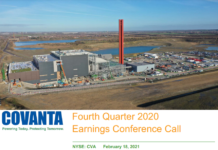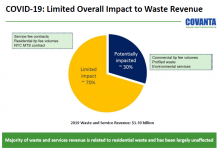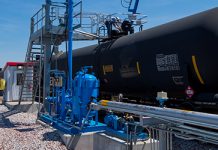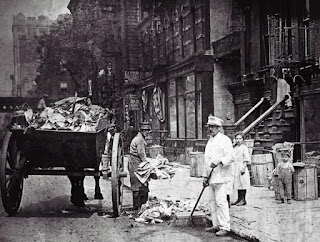
Well into the early 1900s ash collectors plied the streets of America’s cities, picking up ash buckets left at curbs and stoops by households and businesses. The ash collectors sold as much as possible for brick making and soil improvement. The rest went to the handiest dumps.
Since then large utilities have taken over the job of heating and lighting buildings. Coal-fired power plants have become the largest producers of ash. The American Coal Ash Association reports that 53 million metric tons of coal cash were generated in 2013, of which 23 million metric tons were re-used for cement and bricks. The rest was stored in landfills or special disposal sites, in such large quantities presenting potential sources of pollution for nearby water bodies.
There are other sources of ash. Municipal waste is increasingly diverted from landfills to incineration in waste-to-energy systems. At the beginning of 2018, there were 86 municipal waste incinerators in the United States, burning about 29 million tons of garbage annually. These incinerators produced about 0.4% of total U.S. electricity in 2015. Besides electricity these incinerators produce a lot of unburnt material and plenty of ash.
Ash generators have changed but the ash is just as dirty and vexing as ever. Waste handler Covanta, Inc. (CVA: NYSE) has developed a solution for its own ash problem. The company is building its first Total Ash Processing System in Fairless Hills, Pennsylvania. It will have the capacity to process as much as 400,000 tons of ash collected by the company’s waste-to-energy sites. The company claims it will reduce the amount of ash headed for landfills by 65%.
As impressive as the reduction in landfill deposits might seem, what is particularly attractive about Covanta’s ash handling solution is that it turns most of the ash into a potential revenue stream by recovering valuable metals. Physical separation methods applied to municipal waste typically recover valuable ferrous metals and other building products such as sand. However, bottom ash in the incinerators also contains significant amounts of precious metals, including silver and gold that are not recovered by physical separation. Sales of recovered metals will help cover the costs of the added processing to reduce landfill waste.
Covanta management was provided little color on the estimated value of the metals they expect to recover from at the Fairless facility. However, they have cited “attractive return on capital” in their new Total Ash Processing System. If it is successful, we expect Covanta will do some bragging in the coming quarter reports.
In the trailing twelve months Covanta converted 15.8% of its $1.9 billion in total revenue to operating cash flow. The largesse is enough to support capital investment, growth projects and a handsome dividend. The new ash treatment process may not represent a revolution in Covanta’s business model, but conversion of waste ash to metals could support continued conversion of revenue to cash.
Many might view the current stock price as attractive for bull-case position in Covanta the ash collector. The company’ stock established a new 52-week low in late December 2018, apparently in sympathy with the rest of the U.S. equity market. Since then the stock has pushed back up through a line of volume-related support/resistance, giving investors some downside protection for new long positions.
Neither the author of the Small Cap Strategist web log, Crystal Equity Research nor its affiliates have a beneficial interest in the companies mentioned herein.
This article was first published on the Small Cap Strategist weblog on 1/15/19 as “Covanta Turns Ash Collector.”

